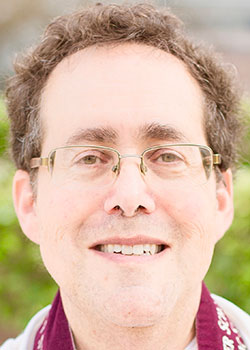Each year, we gather around our tables, surrounded by friends and family, to recount the tale of our ancestors' miraculous deliverance from Egyptian slavery. As we unpack our Haggadot and look to the classical words of the rabbis and sages of old, it is worth stopping for a moment to examine the very first passage of the Seder ritual.
Immediately after the introductory blessings for candle-lighting, Kiddush, and the Shehehiyanu, we invite the hungry into our midst. Using the same Aramaic words that have been recited for thousands of years, Jewish families uncover the matzot and recite: "This is the bread of affliction which our ancestors ate in the land of Egypt. All who are hungry, let them enter and eat. All who are in need, let them come celebrate Pesah. Now we are here; next year in the land of Israel. Now we are enslaved; next year we will be free."
What a strange opening line! The Ha Lahma Anya refers to the matzah, but then goes on to address people who aren't even sitting at the Seder table, who aren't even Jewish at all!
Why start the Seder, a chance to recall our history, by this stirring but unrelated call to feed the hungry? What does this have to do with Pesah?
There are two traditional ways of interpreting the Ha Lahma Anya. The first notes that we refer to bodily needs first ("all who are hungry") and to spiritual needs second ("all who are in need"). Both components are essential parts of liberation--one cannot be free unless there is adequate sustenance and a spirit of liberation. Yet the priority seems to be that one cannot be spiritually free unless freed from the debilitating plague of poverty, hunger, and illness. In the words of the Mishnah, "without bread, there is no Torah." Without material security, it is impossible to attain spiritual depth.
As is often true in Jewish tradition, the opposite interpretation also conveys a significant truth. Notice that in the last two sentences, the order is reversed: first comes spiritual attainment ("next year in the land of Israel") followed by physical freedom ("next year we will be free"). It takes spirit to motivate people to fight for their freedom. It takes vision and insight to stand up against tyranny, whether from a powerful dictator or an irresistible urge. Liberation of the body requires a determination to face the truth, unencumbered by the blinders of convention or of cowardice.
These two views--that physical security must precede spiritual growth, and that a free spirit is the necessary precursor to any lasting liberation--both illumine important aspects of the human situation. Although contradictory on the level of p'shat (literal truth) both are essential components of truth on the level of midrash (how truth translates into human living and community).
And both interpretations confirm the sad reality that we are still in Galut, still in exile. Not only because we don't live in a redeemed Land of Israel, but because the world is still so distant from the vision of the Torah, still alienated from the attainment of harmonious and compassionate living. Too many go to bed hungry each night, too many still die of illnesses for which their are cures, and too many suffer the deadening blows of bigotry and prejudice from their fellow human beings.
In this world, a world of suffering, disappointment, and pain, the Ha Lahma Anya is a clarion call, summoning the Jewish people to our historic task le-takken olam be-malkhut Shaddai, of repairing the world under the rule of God.
All who are hungry may come and eat, but only if we live our lives and structure our society in such a way that the entire human family is cared for. Sadly, that is not the case. In celebrating the liberation from Egyptian slavery, we need to look to ourselves, to recognize that we too often play the role of Pharaoh in the lives of others.
The Ha Lahma Anya reminds us that our proper role model is Moses, the passionate spokesman for the downtrodden and the outcast. Indeed, the Ha Lahma Anya reminds us that our ultimate role model is God, the liberator of slaves and the untiring protector of widows and orphans.
Shabbat shalom and Hag Kasher v'Sameach!

